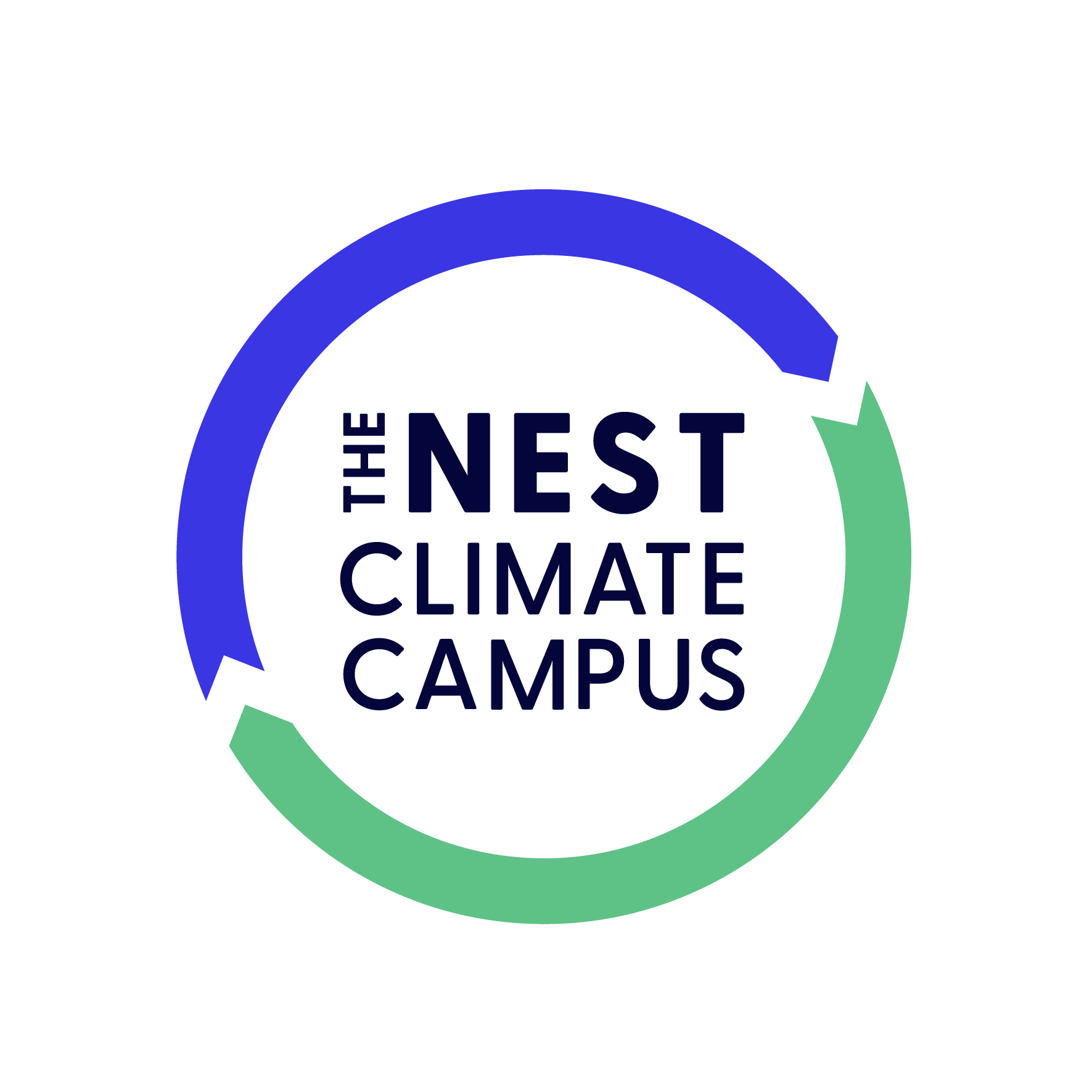8 Ways for Planners to Promote Material Reuse at NYC Events
by The Nest Climate Campus Team
As an event planner, it’s crucial to integrate sustainable practices from the very beginning of your planning process. Reusing materials during your event helps to reduce greenhouse gas emissions, prevent pollution, conserve energy and save money. Implementing these eight steps will help to enhance sustainability through material reuse for your next event in NYC.
Start with the End in Mind
Think through how you can reuse materials before you acquire them. This includes choosing venues and vendors that support reusing materials across different events, donating materials after the event, recycling or composting materials and throwing them out as a last resort. By embedding sustainability into your planning process, you can make more informed and eco-friendly choices.
Choosing a venue that is committed to sustainably is also key. For example, working with the Javits Center in New York City is a great way to make your event more sustainable. The venue features a 7-acre green roof that soaks up 7 million gallons of rainwater each year and has contributed to a 26 percent reduction in the center’s annual energy consumption. Also of note: JavitsCares, a nonprofit organization associated with the venue, helps events reuse materials to keep them from going into the landfill.
Pro tip: Ask early on in the event planning process if your venue provides waste-diversion reports, so that you can measure which of your efforts led to the greatest reduction in landfill waste. Venues often need to enable tracking capabilities for this report, so it is likely not something you can start to request after your event ends.

Implement Sustainable Booth and Activation Structures
Work with venues or contractors who offer rental and reuse options for booth and activation structures. Construction often involves materials that are used once and then discarded. In fact, single-use stands can comprise more than 80 percent of an event’s total waste in some locations. Initiatives like Better Stands, which aims to reduce single use disposable stands and booths, help to cut down on waste. According to Ben Wielgus, Head of Sustainability at Informa, “Better Stands are better in many ways—safer, faster to put up, can look great… can often be more cost-effective, and of course they can cut waste from exhibitions.”
Donate Used Materials to Local Nonprofits
Instead of sending leftover furniture and booth materials to landfills, consider donating them to local nonprofit organizations. Organizations such as JavitsCares and Materials for the Arts accept a wide range of materials, from furniture to promotional items, which they repurpose for community projects and nonprofits.
Use Eco-Friendly Carpeting
Carpeting is another area where events can generate considerable waste. Consider renting carpets, or purchase ones made from recycled materials. Using eco-friendly carpeting options, like those offered by Alma, extend the product life of the carpeting and minimize waste. Ensure that the carpets are collected and stored properly for reuse at future events.

Design Reusable Lanyards
Lanyards are a staple at most events, but they often end up discarded after a single use. To combat this waste, design lanyards that can be reused in the future. Avoid printing specific dates on them that make them obsolete after one use. Additionally, implement a system to collect lanyards at the end of each event. Not only does this reduce waste, but it saves on future costs.
Companies like TerraCycle can help you recycle lanyards that cannot be reused, providing another way to divert waste from landfills.
Print Eco-Friendly Badges
Plastic badge-holders that attach your badge to your lanyard are a significant source of waste. Instead of using them, consider printing badges on recyclable paper, such that the paper can be reused for other purposes in the future. This small change can make a big difference. Recyclable badges are just as functional and can be easily placed in recycling bins after the event. This practice aligns with a zero-waste initiative and reduces the event’s environmental footprint.
Pro tip: Reduce the amount of waste your event generates by setting up separate bins for recycling, compost and waste. (Learn more about how to reduce food waste in 8 Steps to Managing Food Waste.)

Rent Plants
Renting plants is a more sustainable choice. Rental plants can be used multiple times and remain alive and healthy long after your event has ended. This practice supports sustainability and is also more cost-effective.
Educate and Engage Attendees
Educate your attendees about the sustainability efforts you implement. Engage them by providing information on how they can contribute, such as by returning lanyards or properly disposing of recyclable badges. Highlighting your commitment to sustainability can inspire attendees to adopt similar practices in their own lives and create collective climate action.
Planners with events in NYC can encourage attendees and exhibitors to travel to and visit the City sustainably. NYC Tourism + Conventions created a Green Guide to NYC, inviting consumers to use mass transit, take a bike or walking tour of the City, reduce waste while traveling and much more.
By following these eight material reuse steps, you can significantly enhance the sustainability of your event. Remember, sustainability starts with thoughtful planning and a commitment to making eco-friendly choices at every stage of your event.
We have implemented steps above at The Nest Climate Campus, the largest and most inclusive US climate event. Learn more about actionable climate solutions and network with fellow climate leaders on the Campus in September. Get your complimentary* 3 Day Pass or activate your organization on the Campus today!




